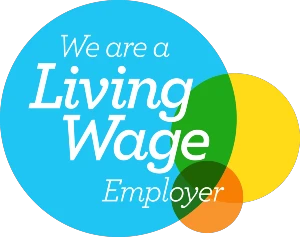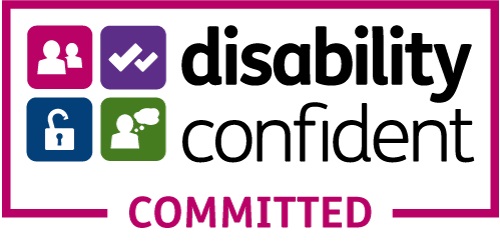What do adult numeracy ‘levels’ mean?
There are different levels of maths (or numeracy) qualification in the UK. Here we show you how they relate to each other.
A comparison between adult skills levels
The National Numeracy Challenge measures the maths you need in daily life at work and at home, and does not directly follow these levels, but the table below shows how scores roughly equate to adult skills levels in maths. Scoring 80 or more on the Challenge shows that you have the Essentials of Numeracy, the core skills needed for daily life.
| Challenge Score* | Adult UK | Schools | Vocational | International | ||
|---|---|---|---|---|---|---|
| UK | England Wales | England Northern Ireland** Wales | Scotland | England Northern Ireland (NQF) Wales (CQFW) | Scotland (SCQF) | PIAAC IALS, ALL |
| 80 to 100 Essentials of Numeracy | Functional Skills Level 1/Level 2 | New GCSE 9 - 4 Old GCSE A* - C | National 4/5 | Level 1/Level 2 | Level 4/5 | Level 3/4 |
| 60 to 79 | Functional Skills Level 1 | New GCSE 3 - 1 Old GCSE D - G | National 4 | Level 1 | Level 4 | Level 3 |
| 40 to 59 | Entry Level 3 | Key stage 2/3 | National 3 | Entry Level | Level 3 | Level 2 |
| 20 to 39 | Entry Level 2 | Key stage 2 | National 2 | Level 2 | Level 1 | |
| 0 to 19 | Entry Level 1 | Key stage 1 | National 1 | Level 1 | Below Level 1 | |
*you can see how the National Numeracy Challenge quick check scores relate to qualifications when you're logged into it.
**note that in Northern Ireland GCSEs are still mostly graded A* - G.
National standards expected at each level
In England and Wales, the adult numeracy levels are measured across five levels, from Entry Level 1 (equivalent to the standard expected for ages 5 to 7) up to Level 2 (Functional Skills or GCSE 4-9/A*-C).
Scotland and Northern Ireland use a system similar to international levels to measure adult skills.
Entry Level 1
Understanding information given by numbers and symbols in simple graphic, numerical and written forms. This includes:
- recognising and selecting coins
- ordering and comparing numbers up to 10
Adults below Entry Level 1 may not be able to select floor numbers in lifts, for example.

Entry Level 2
Understanding information given by numbers, symbols, simple diagrams and charts in graphic, numerical and written form. This includes:
- calculating costs and change
- adding and subtracting two-digit numbers
Adults below Entry Level 2 may not be able to use a cash machine, for example.

Entry Level 3
Understanding information given by numbers, symbols, diagrams and charts for different purposes expressed in graphic, numerical and written forms in different ways. This includes:
- dividing two digits by one digit and understanding remainders
- comparing weights using standard units
Adults with skills below Entry Level 3 may not be able to understand price labels or pay household bills, for example.

Functional Skills Level 1
Understanding straightforward mathematical information used for different purposes and being able to independently select relevant information expressed in graphic, numerical and written forms. This includes:
- doing simple percentages
- converting units of measure
Adults with skills below Level 1 may not be able to understand their pay slips, for example.

Functional Skills Level 2
Understanding mathematical information used for different purposes and can independently select and compare relevant information from a variety of graphic, numerical and written forms.
Adults with skills below Level 2 may not be able to compare the cost of products and services, or work out a household budget, for example.
Sometimes simply referred to as 'Level 2 Maths' this qualification is equivalent to a GCSE 4/C and is often a requirement for progression into roles such as teaching and nursing.

How numeracy levels are measured across the UK
This comparison is in line with The Adult Literacy and Life Skills Survey and the OECD Survey of Adult Skills (PIAAC).
England and Wales have implemented strategies for improving adult literacy and numeracy following on from national surveys to measure overall skills, as well as the OECD Survey of Adult Skills (PIAAC). England conducted the Skills for Life Survey from 2003 to 2011, and Wales ran the National Survey of Adult Skills from 2004 to 2010, both using levels exactly equivalent to learning curriculums for adults and young people within the two regions.
Scotland measures adult numeracy by standards set in the 1999 International Adult Literacy Skills Survey and did not participate in the OECD Survey of Adult Skills (PIAAC).
Northern Ireland measures adult numeracy based on findings from OECD Survey of Adult Skills (PIAAC).
Independently of these reports, the British Cohort Study also includes measures of numeracy abilities and was conducted across the whole of the UK. Although a number of other reports feature the issue of adult numeracy, these are not geared towards providing an accurate snap-shot of numeracy levels across the UK.
How numeracy levels are measured internationally
PIAAC Survey of Adult Skills Level |
Below 1 |
Level 1 |
Level 2 |
Level 3 |
Level 4 |
Level 5 |
|---|---|---|---|---|---|---|
| 0-175 | 176-225 | 226-275 | 276-325 | 326-375 | 376-500 |
PIAAC Survey of Adult Skills Level |
Entry level 1 |
Entry level 2 |
Entry level 3 |
Level 1 |
Level 2+ |
|---|---|---|---|---|---|
| <168 | 168-211 | 211-258 | 258-299 | >299 |
The OECD use international measures of numeracy levels which roughly correspond to the curriculum in the UK. In the table above we have provided more exact comparison between UK and international measures. Level 2 in the English and Welsh National standards, which we define as the minimum, starts roughly half-way through International Level 3.
Expected standards at each level (for the PIAAC Survey of Adult Skills Levels)
Below Level 1
At this level individuals must be able to carry out simple processes such as:
- counting and sorting
- performing basic arithmetic operations with whole numbers and money
- recognise common spatial representations
- other familiar contexts where the mathematical content is clear with little or no text

Level 1
At this level individuals must be able to carry out simple, one-step mathematical processes where the mathematical content is clear with little text, such as the following:
- counting and sorting
- performing basic arithmetic operations
- understanding simple percentages
- locating and identifying simple, common graphical or spatial representations

Level 2
At this level individuals must be able to identify and act on mathematical information embedded in a range of common contexts where the mathematical content is fairly clear or visual. Tasks tend to require the application of two or more steps, such as the following:
- processes involving calculation with whole numbers and common decimals
- percentages and fractions
- simple measurement and spatial representation
- estimation
- interpretation of relatively simple data and statistics in texts, tables and graphs

Level 3
At this level individuals must be able to understand mathematical information that may be less clear, embedded in contexts that are not always familiar and represented in more complex ways. Tasks require several steps and may involve the choice of problem-solving strategies, such as the following
- application of number sense and spatial sense
- recognising and working with mathematical relationships, patterns and proportions expressed in verbal or numerical form
- interpretation and basic analysis of data and statistics in texts, tables and graphs.

Level 4
At this level individuals must be able to understand a broad range of mathematical information that may be complex, abstract or embedded in unfamiliar contexts. These tasks involve undertaking multiple steps and choosing relevant problem-solving strategies, such as the following:
- analysis and more complex reasoning with quantities and data
- statistics and probability
- spatial relationships
- change, proportions and formulas
- understanding arguments and communicating explanations for answers

Level 5
At this level individuals must be able to understand complex representations, abstract and formal mathematical and statistical ideas, possibly embedded in more complex forms. This includes the following:
- integrating multiple types of mathematical information where considerable interpretation is required
- come to well reasoned conclusions
- work with mathematical arguments and models
- justify, evaluate and critically reflect on answers

What’s your numeracy level?
The National Numeracy Challenge is a free tool which you can use to check which numeracy level you are roughly working at and improve your skills. You can also use it to prepare for qualifications like Functional Skills Maths.




